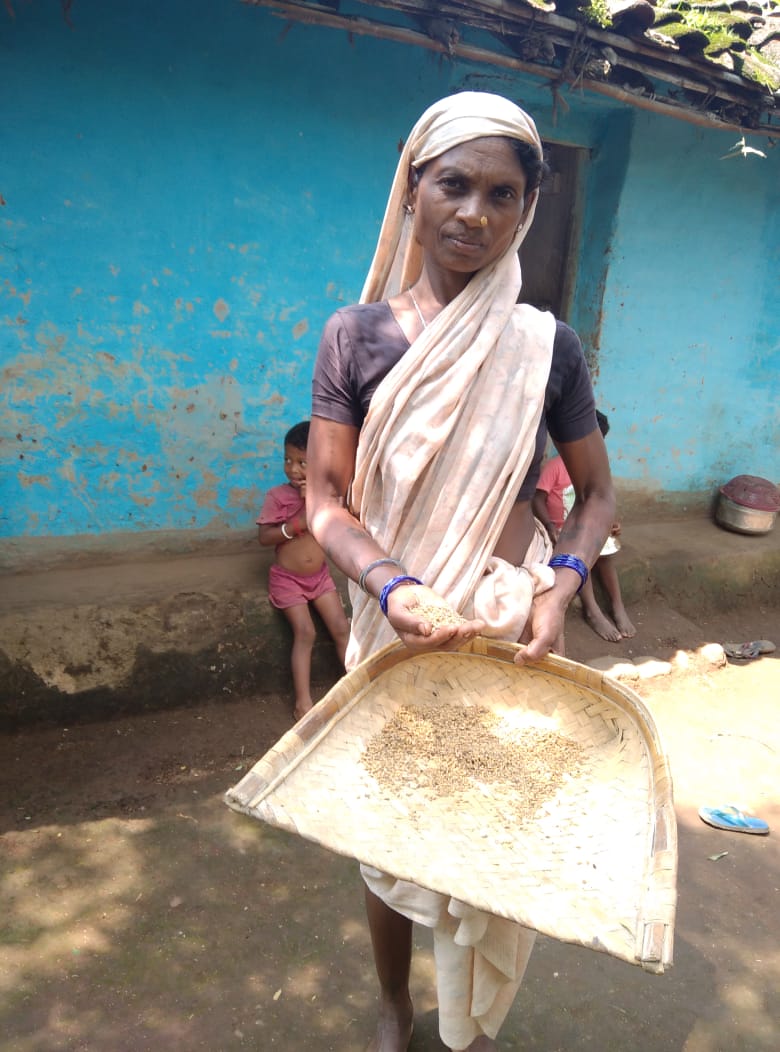Indigenous crop varieties have adapted to many changes over generations and could be critical for future food security.
by Harshal Khade
With inputs and photos from Virendra Kumar Dubey, Arvind Kumar Uikey, Kasturi Samal, Sujaya Dangwar and Ganesh Kakde

India is one of the mega-diverse countries of the world. It is endowed with rich natural heritage. This natural capital or biodiversity is the variety of nature that sustains and nourishes all forms of life.
Did you know that India is one of the eight Vavilovian centres of origin and diversity of food crops, with over 300 wild ancestors and close relatives of plants now in cultivation? Vavilovian centres are named after the renowned Russian botanist N I Vavilov.
Ecosystem services
Biodiversity and the interconnectedness of various species within an ecosystem, provides services that sustain all organisms living within.
These services or essential goods can be grouped under four types:
a) Provisioning services such as food, fibre, fuel
b) Regulating services such as pollination, seed dispersal, water purification
c) Supporting services such as providing habitat, soil formation, nutrient cycling
d) Cultural services of knowledge systems, education, recreation and the like.
That’s why biodiversity is essential for human well-being. In the Indian context, the intersection of crop diversity and the climate variability that we are seeing of late can be crucial for the future generations’ food security.
India had more than 100,000 varieties of rice in the 20th century. Now, however, only around 6,000 varieties of rice survive. This is just an instance of how we are losing indigenous varieties of crops.
Indigenous crop varieties and their importance
Many varieties or species of crops are confined to localised areas and are considered to be sturdy, resistant, requiring less water and usually display special characteristics in terms of nutritional value, fragrance and colour.
At the moment, variety of indigenous crops is gradually being depleted due to various reasons. The loss of indigenous crop varieties means disruption of agriculture cycles that have been feeding, nurturing and sustaining human beings and other life forms for aeons. This also means a loss of unique properties that meet our unique nutritional requirements in varied geography.
In India, many concerned individuals and organisations are working to conserve indigenous varieties of crops. Like Debal Deb who is trying to save India’s traditional varieties or Padma Shri Rahibai Soma Popere who has 114 varieties of 53 crops, preserved employing traditional methods. Navdanya organisation is doing amazing work in the area of conservation of seeds.
WOTR’s work in biodiversity conservation
Watershed Organisation Trust is working on a number of aspects of biodiversity conservation measures especially as part of the Climate Change Adaptation Project. Training programmes at the village as well as national level are conducted on biodiversity, ecosystem services, linkages of biodiversity with ecosystem services, climate change, role of biodiversity in climate change adaptation along with a tool to document biodiversity — the People’s Biodiversity Register (PBR). WOTR has conducted training for farmers on seed storage and preservation of local seeds of cereals, pulses, paddy, millet and groundnut.


WOTR has brought out numerous publications such as the ‘How-to’ People’s Biodiversity Register (PBR) manual. It provides step-by-step guidance on how to prepare and maintain a PBR with the participation of the local community. The PBR manual is an outcome of the observations while implementing the PBR process in the villages of Maharashtra and Madhya Pradesh. It is prepared in collaboration with the Maharashtra State Biodiversity Board (MSBB). Through People’s Biodiversity Register (PBR) the communities maintain a register of the local flora and fauna and Traditional Knowledge Systems (TKS).
So far, WOTR has supported villagers to prepare PBR in Maharashtra, Madhya Pradesh and Jharkhand.
https://wotr.org/sites/default/files/PBR%20How%20to%20Manual.pdf
‘Children’s Biodiversity Register (CBR) – A Field Guide’ is aimed at encouraging school children to understand and document the biodiversity in their schools and surroundings. The guide is meant to help children gather data about the local flora, fauna, and related cultural services while scientifically documenting the same.
This allows children to observe biodiversity in their school premises and enter the observations in the CBR. This register also gives a description of commonly found birds and animals with their description and photographs.
Other publications:
Biodiversity position paper – https://wotr.org/system/files/Position_Papers/WOTR-Biodiversity%20Position%20Paper.pdf
Ecosystem-based Adaptation: Mainstreaming Biodiversity in Watershed Development – https://wotr.org/sites/default/files/Biodiversity%20-%20Policy%20Brief%20No.%202_0.pdf
Seed collection
WOTR promotes collection of native seeds to supplement the PBR. Collection also generates awareness while appealing to people to understand the unique wisdom of the ecosystem manifesting in the form of these indigenous crop varieties. These varieties have adapted to many changes over generations and could be critical for the future.
Promotion of indigenous crop varieties
WOTR is actively promoting cultivation and conservation of indigenous crop varieties. Here are a few examples of indigenous varieties of crops from different areas.














Story of hope: Villages in Seoni, Madhya Pradesh
Village development committees (VDCs) are collecting seeds and planting them on the newly constructed farm bunds in 32 villages of Seoni district, MP. Over 30,000 seeds of indigenous varieties of trees such as mahua, moringa, karanj, babul and amla were planted this monsoon.

Village Development Committee members planting indigenous seeds on farm bunds in Seoni, Madhya Pradesh.


VDC members took this decision for the benefit of generations to come. People of these villages helped forage the seeds from the forests and planted them. VDC members also worked together with the gram panchayat for the plantation of more than 10,000 trees –mango, guava, jamun, karanj, teak, lemon and custard apple to name a few.

In short, for longterm sustenance, we need to appreciate and conserve crop diversity of this country in every possible way.
References:
https://www.cbd.int/countries/profile/?country=in#facts
https://wotr.org/sites/default/files/PBR%20How%20to%20Manual.pdf
https://www.sourcetrace.com/blog/conserving-indigenous-rice-varieties-stories-india/
Saving India’s traditional rice varieties – BBC News
https://www.bbc.com/news/av/world-asia-53411103/saving-india-s-traditional-rice-varieties





